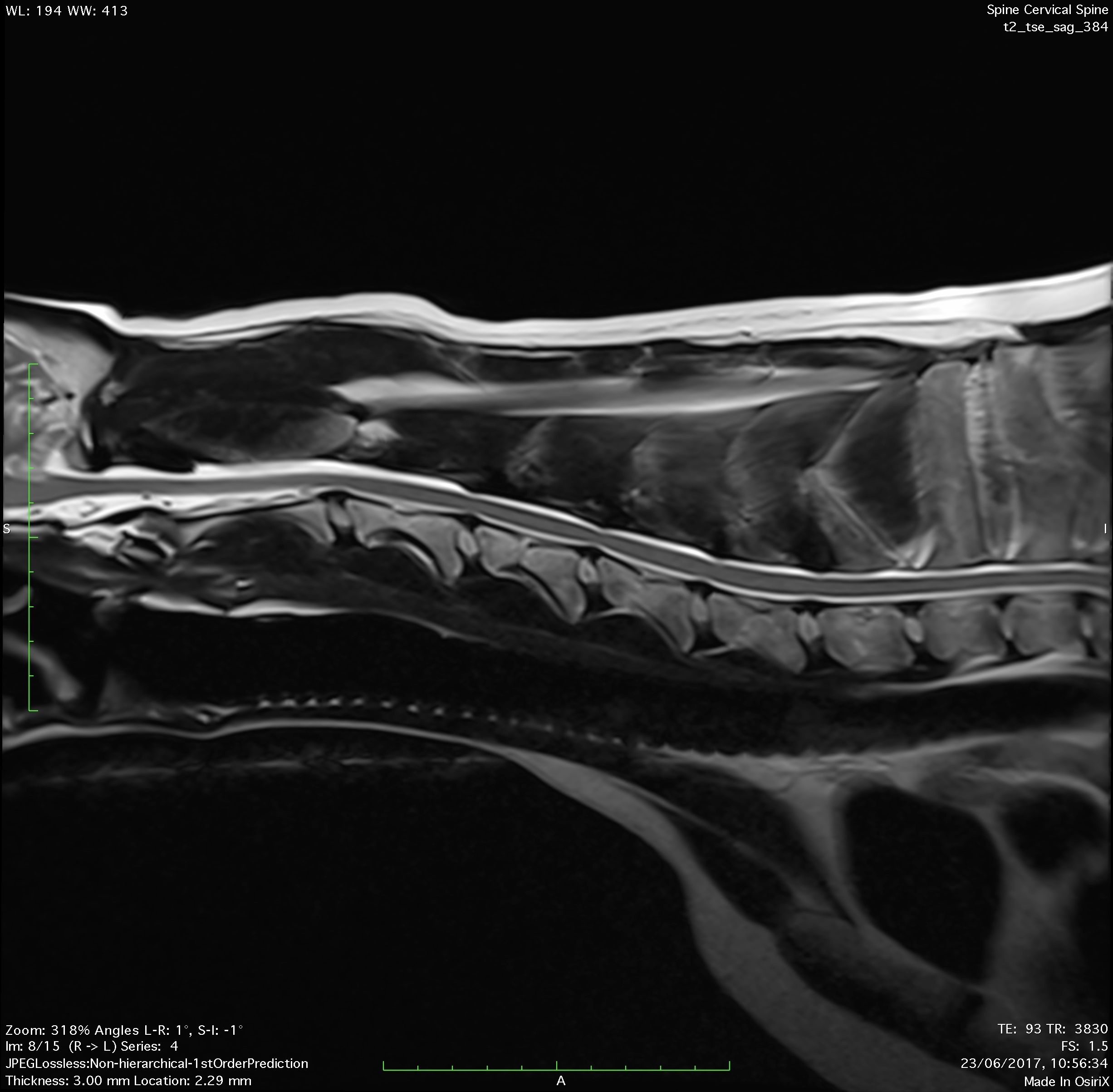Intervertebral disc disease (IVDD) is the most common cause of spinal cord injury in dogs; certain breeds are predisposed to slipped discs. Intervertebral discs are fibrocartilaginous cushions between the vertebrae (except the first two cervical vertebrae) that allow movement, are supportive, and act like “cushions” in the space between vertebrae. These discs are subject to a number of degenerative conditions and forces that predispose them to bulge or rupture over time. This rupture leads to damage to the spinal cord.
A slipped disc can vary in severity from pain only through to paralysis and loss of bladder function. The more serious the effects of the slipped disc, the more urgent the situation. Severe cases are generally best treated with surgery which aims to relieve the compression of the spinal cord. Typically, advanced imaging such as MRI is required to diagnose the slipped disc and to guide decision-making on the best management options.
At ChesterGates, we have a 1.5 Tesla MRI which allows for high-resolution scans to be acquired with reduced scan times compared to low-field MR scanners. Reduced scan times means shorter anaesthesia times which is safer for patients.
We also work with the Dachshund Breed Council on a screening programme to try and reduce the prevalence of disc problems in the Dachshund.
